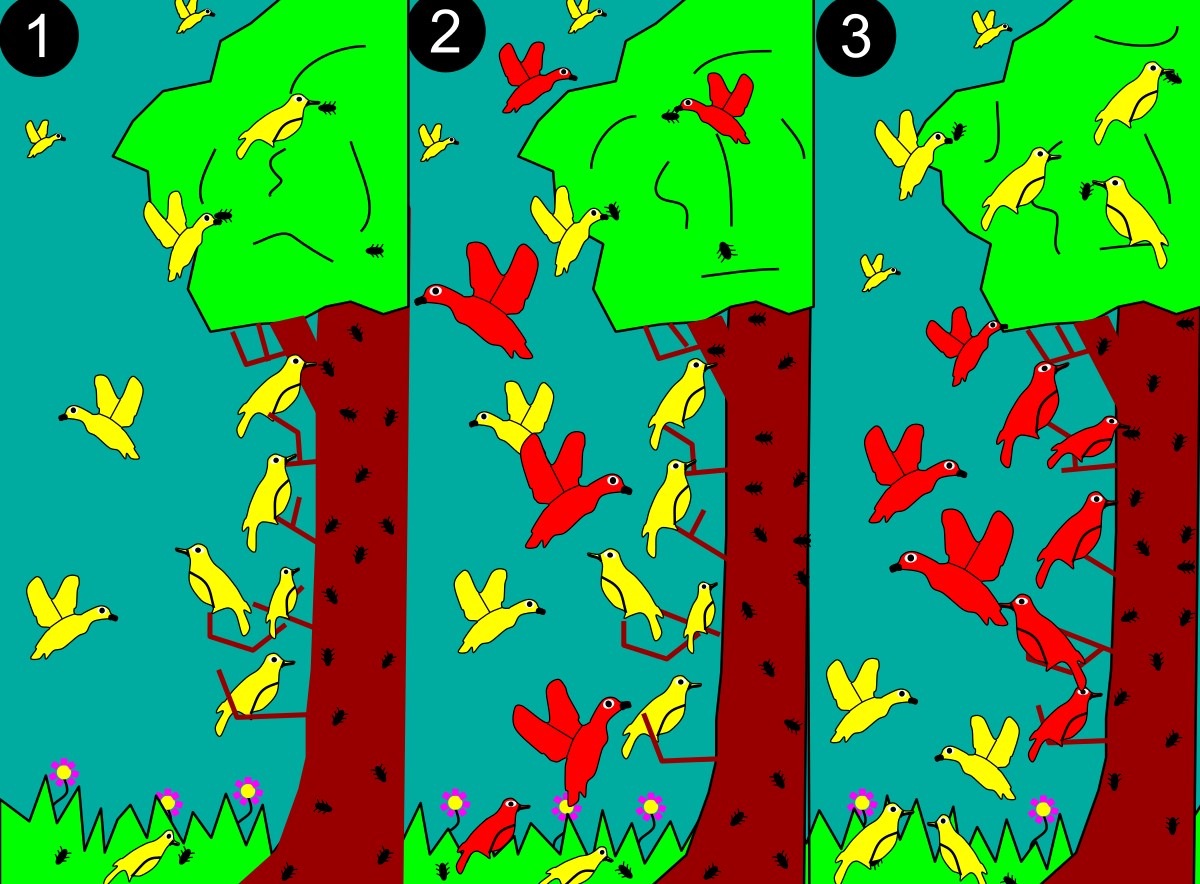
The Competitive Exclusion Principle is a fundamental principle in the field of biology that has profound implications for understanding how organisms interact with each other in natural ecosystems. Proposed by the ecologist Georgii Gause in 1934, this principle states that two species competing for the same limited resources cannot coexist indefinitely. Instead, one species will eventually outcompete and eliminate the other, resulting in the exclusion of the weaker species from the ecosystem.
While the Competitive Exclusion Principle may seem straightforward at first glance, there are several enigmatic and fascinating facts surrounding this concept that deserve closer examination. From real-life examples that illustrate its applicability to the mysteries surrounding its mechanisms, the Competitive Exclusion Principle continues to intrigue biologists and stimulate ongoing research.
In this article, we will delve into 18 intriguing facts about the Competitive Exclusion Principle, shedding light on its complexities and highlighting its significance in understanding the dynamics of ecological communities.
Key Takeaways:
- When two species compete for the same resources, one will eventually win out, leading to extinction, adaptation, or niche expansion. This process shapes ecosystems and drives evolution.
- The Competitive Exclusion Principle helps us understand how species interact and compete in nature. It’s like a survival game where only the fittest species can thrive in a specific environment.
Definition of Competitive Exclusion Principle
The Competitive Exclusion Principle, also known as Gause’s Law, states that two species competing for the same limited resources cannot coexist in the same ecological niche indefinitely.
Proposed by Georgy Gause
The Competitive Exclusion Principle was proposed by the Russian biologist, Georgy Gause, in 1934.
Explains Species Competition
The principle explains the process of species competition and how one species eventually outcompetes and eliminates another species in a specific ecological niche.
Resource Limitation
The principle emphasizes the role of limited resources in driving competition between species. When resources become scarce, competition intensifies.
Outcome of Competitive Exclusion
When one species successfully excludes another from a specific ecological niche, the excluded species either goes extinct, expands into a different niche, or evolves to reduce competition.
Key Mechanism of Evolution
The Competitive Exclusion Principle is considered a key mechanism driving evolution, as it promotes the development of traits and adaptations that enhance an organism’s competitive advantage.
Role of Interspecific Competition
Interspecific competition, which refers to competition between different species, is a fundamental aspect of the Competitive Exclusion Principle.
Role of Intraspecific Competition
Intraspecific competition, which occurs between individuals of the same species, can also contribute to the process of competitive exclusion.
Coexistence in the Short Term
While the Competitive Exclusion Principle suggests that species cannot coexist in the long term, coexistence may occur in the short term through mechanisms like resource partitioning and temporal or spatial niche differentiation.
Experimental Evidence
Various experiments have provided empirical evidence supporting the Competitive Exclusion Principle, demonstrating the competitive interactions between species in controlled environments.
Role in Community Structure
The Competitive Exclusion Principle plays a crucial role in shaping community structure by influencing species composition and determining which species dominate in specific niches.
Impact on Biodiversity
Competitive exclusion can have significant implications for biodiversity, as it limits the number of species that can coexist in a given ecosystem.
Exceptions to the Rule
While the principle generally holds true, there are exceptions where similar species can coexist by utilizing different resources or through other mechanisms like predator-prey interactions.
Applicability in Real-world Scenarios
The Competitive Exclusion Principle has been observed in various real-world scenarios, including the competition among bird species for nesting sites and food.
Role in Ecological Restoration
The principle’s understanding is crucial for ecological restoration efforts, as it helps determine which species are suitable for reintroduction into a particular ecosystem.
Relationship with Evolutionary Divergence
Competitive exclusion can drive evolutionary divergence, leading to the development of new species or the formation of distinct populations.
Applications in Agriculture
The Competitive Exclusion Principle has practical applications in agriculture, aiding in pest control strategies and the selection of crop varieties that minimize competition with weeds.
Predictive Power
The Competitive Exclusion Principle provides a predictive framework for understanding species interactions, allowing scientists to anticipate the outcome of competitions between species.
Conclusion
The Competitive Exclusion Principle is a fascinating concept in the field of ecology that highlights the struggle for resources among different species in a given habitat. Through in-depth research and analysis, we have uncovered 18 enigmatic facts about this principle. These facts shed light on the intricate dynamics of competition and coexistence in the natural world.
From the intriguing concept of niche differentiation to the evidence of altered resource utilization patterns, the Competitive Exclusion Principle provides valuable insights into the delicate balance that exists in ecosystems. Understanding these facts can have significant implications for conservation efforts, species management, and even human activities that impact biodiversity.
As scientists continue to investigate this principle, new discoveries and insights are sure to emerge. The study of competition and its consequences is an ongoing process that helps us comprehend the complex web of life on Earth. It is through these efforts that we can strive for a more sustainable and harmonious coexistence with the natural world.
FAQs
1. What is the Competitive Exclusion Principle?
The Competitive Exclusion Principle, also known as Gause’s Law, states that two species competing for the same resources cannot coexist indefinitely. Eventually, one species will outcompete the other, leading to the local extinction of the weaker competitor.
2. How does niche differentiation relate to the Competitive Exclusion Principle?
Niche differentiation refers to the evolutionary process whereby competing species develop specialized traits or behaviors to reduce overlap in resource use. This helps to reduce the intensity of competition, allowing multiple species to coexist in the same habitat.
3. Can the Competitive Exclusion Principle be applied to human interactions?
While the Competitive Exclusion Principle was originally formulated for biological interactions, its fundamental concepts can be applied to understand human competition in various contexts. It can help explain the dynamics of competition in industries, markets, and even social dynamics.
4. Are there any exceptions to the Competitive Exclusion Principle?
Though the Competitive Exclusion Principle generally holds true, there are exceptions. Factors such as fluctuating environmental conditions, cooperative interactions, and mutualistic relationships can allow competing species to coexist in certain situations.
5. How does the Competitive Exclusion Principle impact biodiversity?
The Competitive Exclusion Principle plays a crucial role in shaping patterns of species diversity. By limiting the resources available to each species, it promotes specialization and niche differentiation, ultimately contributing to the variety of species observed in ecosystems.
Competitive exclusion principle fascinates ecologists, but there's more to explore in nature's wonders. Uncover how conservation biology strives to protect our planet's precious resources and environmental science reveals Earth's secrets. Marvel at the incredible variety of life on our planet and learn biodiversity facts that will leave you in awe. Discover how species coexist through resource partitioning, a process that allows them to thrive in shared habitats.
Was this page helpful?
Our commitment to delivering trustworthy and engaging content is at the heart of what we do. Each fact on our site is contributed by real users like you, bringing a wealth of diverse insights and information. To ensure the highest standards of accuracy and reliability, our dedicated editors meticulously review each submission. This process guarantees that the facts we share are not only fascinating but also credible. Trust in our commitment to quality and authenticity as you explore and learn with us.


